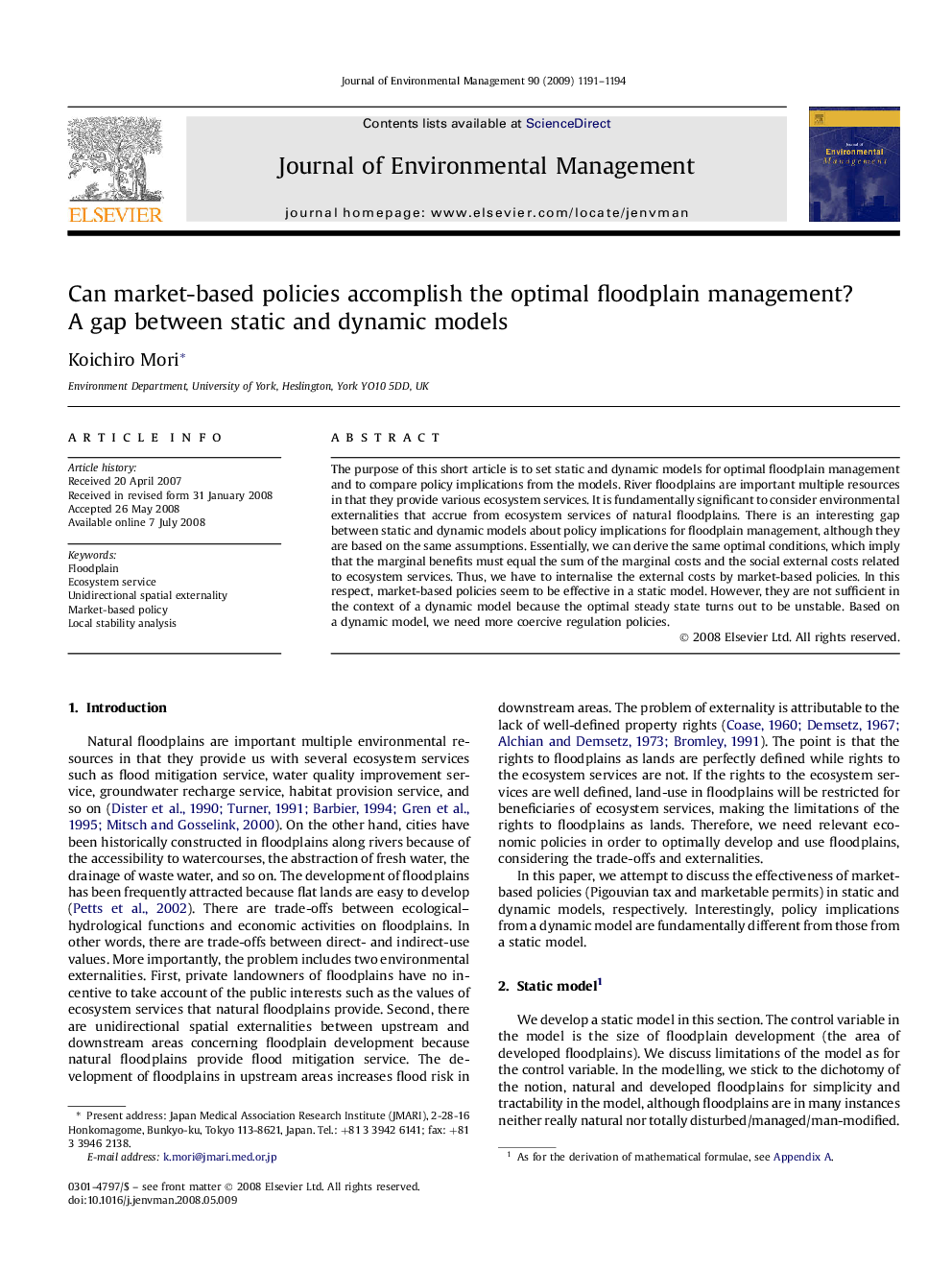| Article ID | Journal | Published Year | Pages | File Type |
|---|---|---|---|---|
| 1058461 | Journal of Environmental Management | 2009 | 4 Pages |
The purpose of this short article is to set static and dynamic models for optimal floodplain management and to compare policy implications from the models. River floodplains are important multiple resources in that they provide various ecosystem services. It is fundamentally significant to consider environmental externalities that accrue from ecosystem services of natural floodplains. There is an interesting gap between static and dynamic models about policy implications for floodplain management, although they are based on the same assumptions. Essentially, we can derive the same optimal conditions, which imply that the marginal benefits must equal the sum of the marginal costs and the social external costs related to ecosystem services. Thus, we have to internalise the external costs by market-based policies. In this respect, market-based policies seem to be effective in a static model. However, they are not sufficient in the context of a dynamic model because the optimal steady state turns out to be unstable. Based on a dynamic model, we need more coercive regulation policies.
